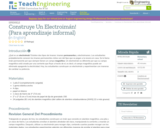
Los estudiantes construyen un electroimán y lo utilizan para recoger objetos.
- Subject:
- Applied Science
- Engineering
- Material Type:
- Activity/Lab
- Provider:
- TeachEngineering
- Provider Set:
- Sprinkles
- Date Added:
- 01/01/2015

Los estudiantes construyen un electroimán y lo utilizan para recoger objetos.
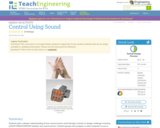
Students gain a deeper understanding of how sound sensors work through a hands-on design challenge involving LEGO MINDSTORMS(TM) NXT taskbots and sound sensors. Student groups each program a robot computer to use to the sound of hand claps to control the robot's movement. They learn programming skills and logic design in parallel. They experience how robots can take sensor input and use it to make decisions to move and turn, similar to the human sense of hearing. A PowerPoint® presentation and pre/post quizzes are provided.
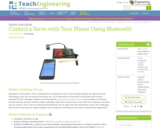
Bluetooth is everywhere—from smartphones to computers to cars. Even though students are exposed to this technology, many are not aware of how they can use it themselves to wirelessly control their own creative projects! For this challenge, students build on what they learned during a previous Arduino maker challenge, Make and Control a Servo Arm with Your Computer, and learn how to control a servo with an Android phone (iPhones do not work with the components used in this challenge). By the end of the exercise, expect students to be wirelessly controlling a servo with a simple phone application!
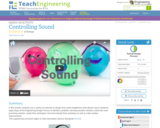
In this activity, students use a variety of materials to design and create headphones that absorb sound.
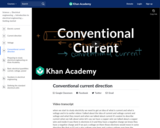
By convention, we define positive direction of current to be in the direction a positive charge would move. Electrons (with their negative charge) move in the opposite direction of the positive current arrow. Created by Willy McAllister.

In this video segment adapted from ZOOM, two solar cookers are tested against a control to see which can cook a "s'more" faster.
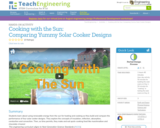
Students learn about using renewable energy from the Sun for heating and cooking as they build and compare the performance of four solar cooker designs. They explore the concepts of insulation, reflection, absorption, conduction and convection.
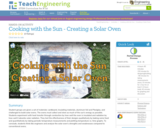
Student groups are given a set of materials: cardboard, insulating materials, aluminum foil and Plexiglas, and challenged to build solar ovens. The ovens must collect and store as much of the sun's energy as possible. Students experiment with heat transfer through conduction by how well the oven is insulated and radiation by how well it absorbs solar radiation. They test the effectiveness of their designs qualitatively by baking something and quantitatively by taking periodic temperature measurements and plotting temperature vs. time graphs. To conclude, students think like engineers and analyze the solar oven's strengths and weaknesses compared to conventional ovens.
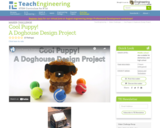
Students are given the engineering challenge to design and build doghouses that shelter a (toy) puppy from the heat—and to create them within material, size and cost constraints. This requires them to apply what they know (or research) about light energy and how it does (or does not) travel through various materials, as well as how a material’s color affects its light absorption and reflection properties. They build their doghouse designs and test them by taking thermometer readings under hot lamps, and then think of ways to improve their designs. This is a great project for learning about light and heat: energy transfer, absorption, insulation and material properties, and easily scales up/down for size and materials.
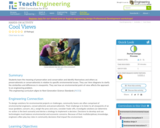
Students learn the meaning of preservation and conservation and identify themselves and others as preservationists or conservationists in relation to specific environmental issues. They use Venn diagrams to clarify the similarities and differences in viewpoints. They see how an environmental point-of-view affects the approach to an engineering problem.
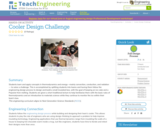
Students learn and apply concepts in thermodynamics and energy—mainly convection, conduction, and radiation— to solve a challenge. This is accomplished by splitting students into teams and having them follow the engineering design process to design and build a small insulated box, with the goal of keeping an ice cube and a Popsicle from melting. Students are given a short traditional lecture to help familiarize them with the basic rules of thermodynamics and an introduction to materials science while they continue to monitor the ice within their team’s box.
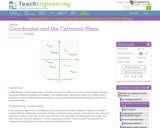
A brief refresher on the Cartesian plane includes how points are written in (x, y) format and oriented to the axes, and which directions are positive and negative. Then students learn about what it means for a relation to be a function and how to determine domain and range of a set of data points.
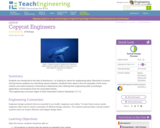
This lesson introduces students to the idea of biomimicry or looking to nature for engineering ideas. Biomimicry involves solving human problems by mimicking natural solutions, and it works well because the solutions exist naturally. There are numerous examples of useful applications of biomimicry, and in this lesson we look at a few fun examples.
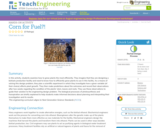
In this activity, students examine how to grow plants the most efficiently. They imagine that they are designing a biofuels production facility and need to know how to efficiently grow plants to use in this facility. As a means of solving this design problem, they plan a scientific experiment in which they investigate how a given variable (of their choice) affects plant growth. They then make predictions about the outcomes and record their observations after two weeks regarding the condition of the plants' stem, leaves and roots. They use these observations to guide their solution to the engineering design problem. The biological processes of photosynthesis and transpiration are briefly explained to help students make informed decisions about planning and interpreting their investigation and its results.

This video from NASA features the Cosmic Origin Spectrograph (COS), which allows scientists to use spectrographic analysis to assess the composition of intergalactic material.

Students learn about the many types of expenses associated with building a bridge. Working like engineers, they estimate the cost for materials for a bridge member of varying sizes. After making calculations, they graph their results to compare how costs change depending on the use of different materials (steel vs. concrete). They conclude by creating a proposal for a city bridge design based on their findings.
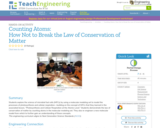
Students explore the science of microbial fuel cells (MFCs) by using a molecular modeling set to model the processes of photosynthesis and cellular respiration—building on the concept of MFCs that they learned in the associated lesson, “Photosynthesis and Cellular Respiration at the Atomic Level.” Students demonstrate the law of conservation of matter by counting atoms in the molecular modeling set. They also re-engineer a new molecular model from which to further gain an understanding of these concepts.
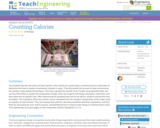
The students discover the basics of heat transfer in this activity by constructing a constant pressure calorimeter to determine the heat of solution of potassium chloride in water. They first predict the amount of heat consumed by the reaction using analytical techniques. Then they calculate the specific heat of water using tabulated data, and use this information to predict the temperature change. Next, the students will design and build a calorimeter and then determine its specific heat. After determining the predicted heat lost to the device, students will test the heat of solution. The heat given off by the reaction can be calculated from the change in temperature of the water using an equation of heat transfer. They will compare this with the value they predicted with their calculations, and then finish by discussing the error and its sources, and identifying how to improve their design to minimize these errors.
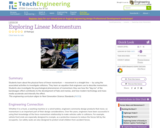
Students learn about the physical force of linear momentum movement in a straight line by investigating collisions. They learn an equation that engineers use to describe momentum. Students also investigate the psychological phenomenon of momentum; they see how the "big mo" of the bandwagon effect contributes to the development of fads and manias, and how modern technology and mass media accelerate and intensify the effect.
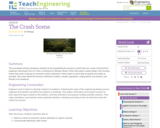
In this lesson, students find their location on a map using Latitude and Longitudinal coordinates. They determine where they should go to be rescued and how best to get there.